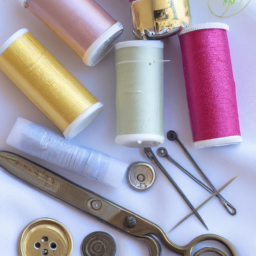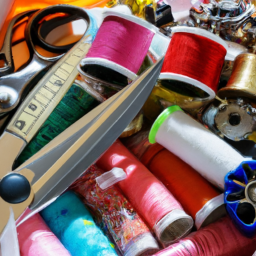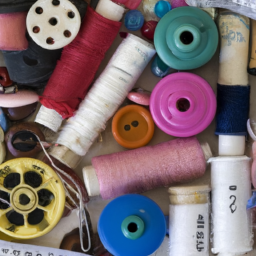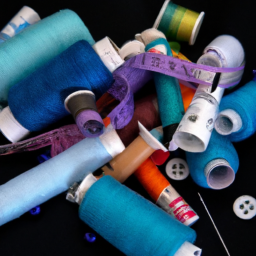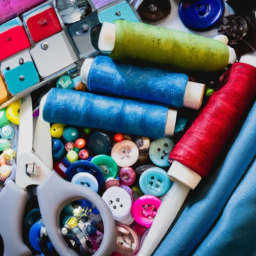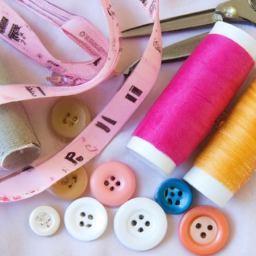
When it comes to sewing denim, using the right thread is essential for achieving durable and long-lasting results. Denim fabric is known for its sturdiness and ability to withstand wear and tear, and your chosen thread should be able to match that strength and durability.
What to Consider When Choosing Sewing Thread for Denim
- Thread Weight: Opt for a heavier weight thread such as 40-wt or 30-wt for denim. Lightweight threads might not be able to withstand the strain put on stitches when sewing denim fabric.
- Thread Material: Polyester or cotton-covered polyester threads are the most suitable options for sewing denim. They are strong, have good abrasion resistance, and can withstand the rigors of frequent washing and drying.
- Thread Color: Choose a thread color that matches or complements the color of your denim fabric. A contrasting color can create a decorative effect, while a matching color will blend seamlessly and make the stitches less noticeable.
- Thread Construction: Look for threads with a strong and tight twist, as this will help prevent breakage and maintain the integrity of your stitches while sewing denim fabric.
- Thread Quality: Invest in good quality threads, as they are more likely to be stronger and resistant to fraying. They might be a bit more expensive, but they will ultimately save you time and effort by reducing the chances of thread breakage during your sewing projects.
Tips for Sewing Denim
When sewing denim fabric, it is important to keep a few things in mind:
- Use a sharp needle specifically designed for heavy fabrics, such as denim or jeans needles. These needles have a stronger shaft and a sharper point that can penetrate the thick denim fabric with ease.
- Consider using a longer stitch length to avoid thread breakage. A longer stitch allows the thread to withstand the tension and prevents it from breaking when the fabric is under stress.
- Topstitching on denim can add a decorative touch. Use a contrasting thread color and consider using a thicker topstitching thread to make the decorative stitches more prominent.
- Use proper tension settings to ensure even stitches and prevent bunching or puckering of the fabric. Test your thread tension on a scrap piece of denim before starting your project.
- Always backstitch at the beginning and end of the seams to reinforce the stitches and prevent them from unraveling.
By choosing the right sewing thread and following these tips, you can ensure strong, professional-looking seams and stitches when working with denim fabric. So, pick up your denim projects confidently and enjoy the durable and stylish results!
